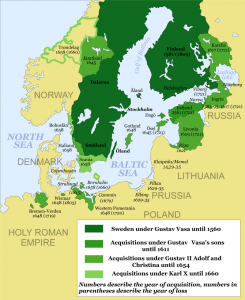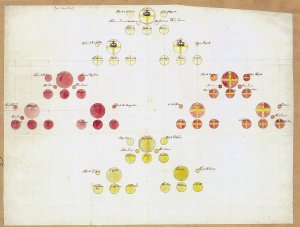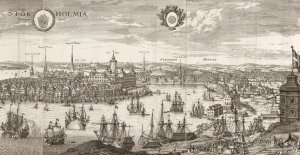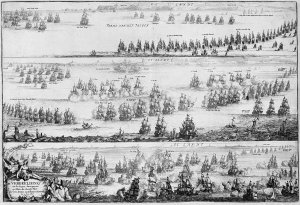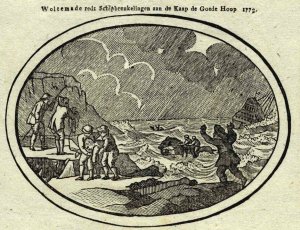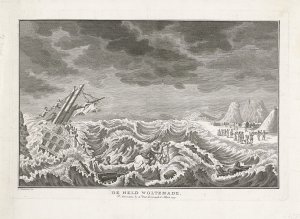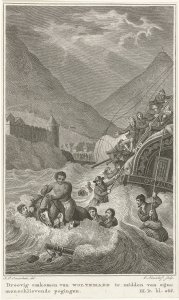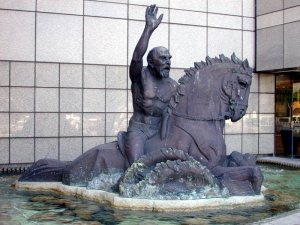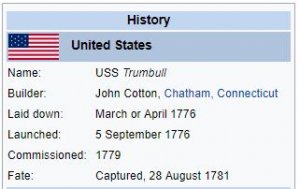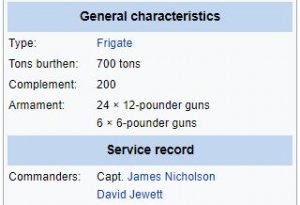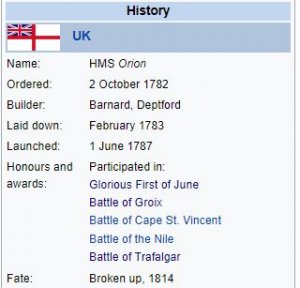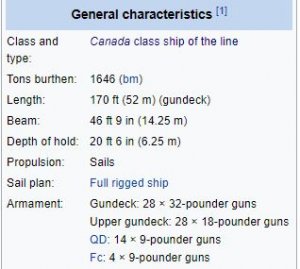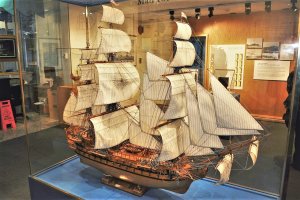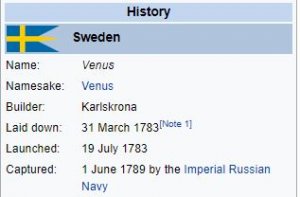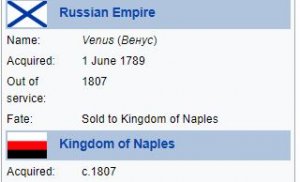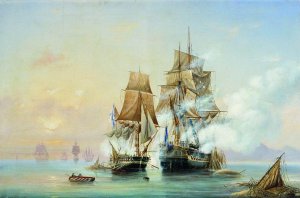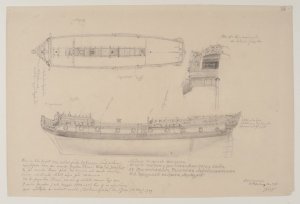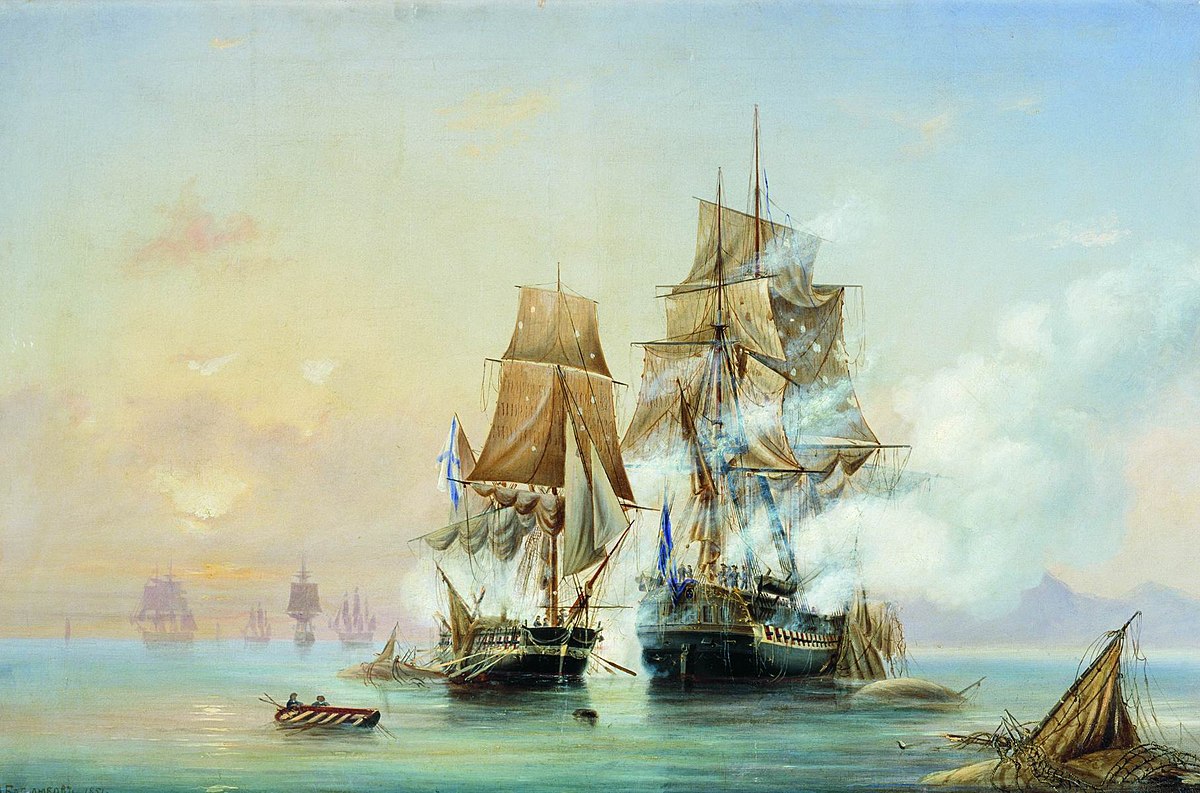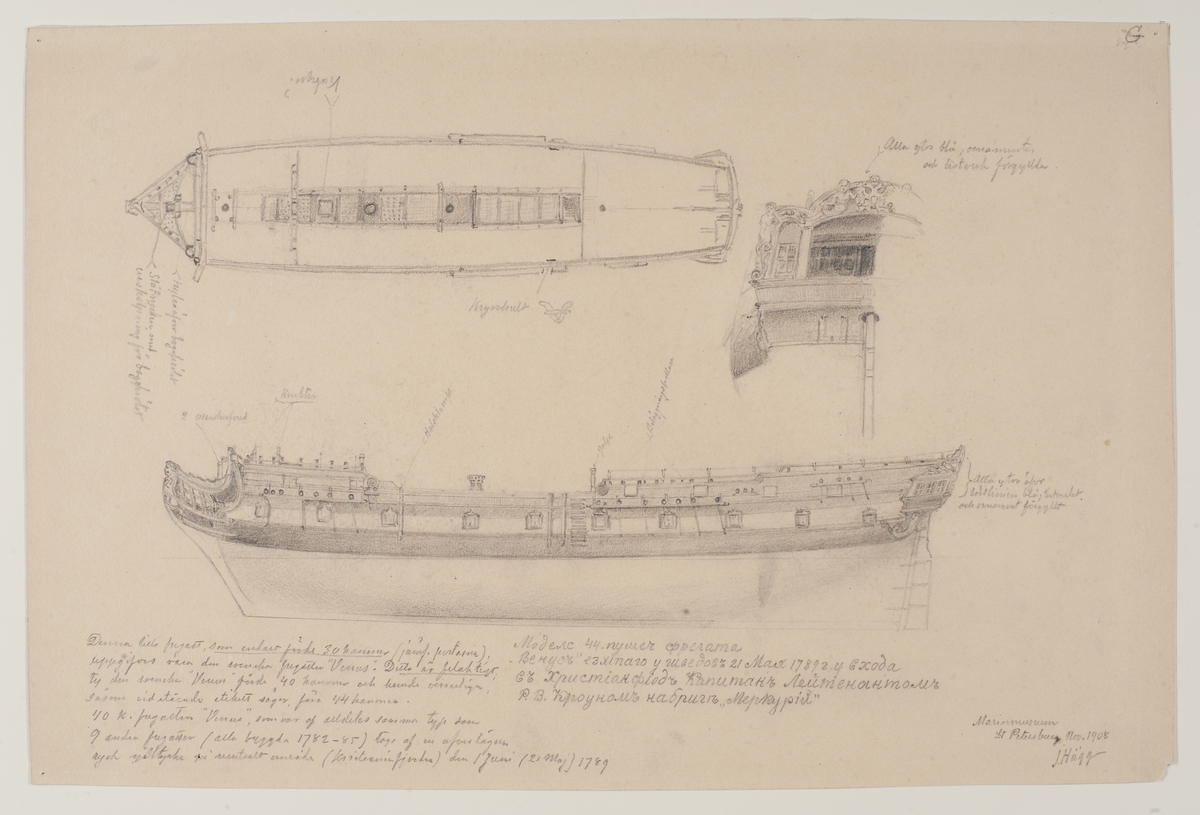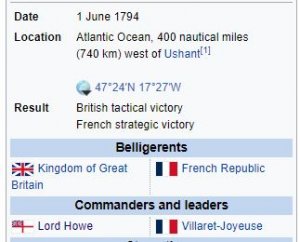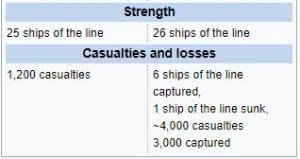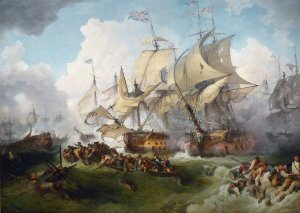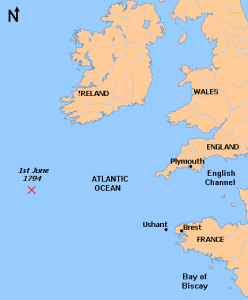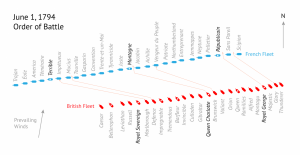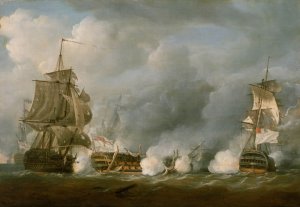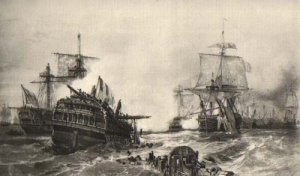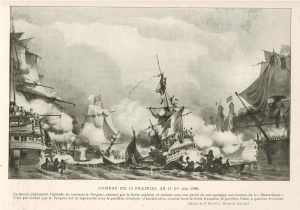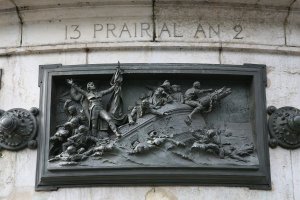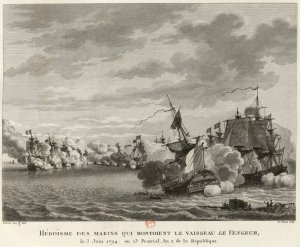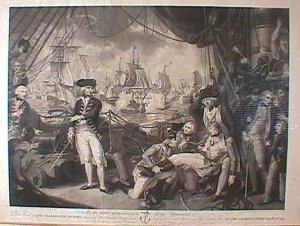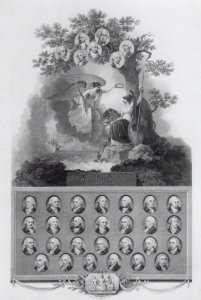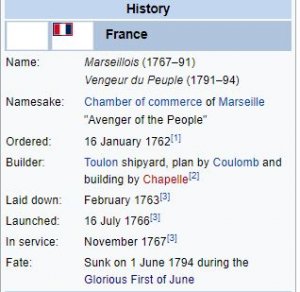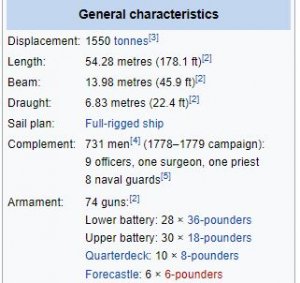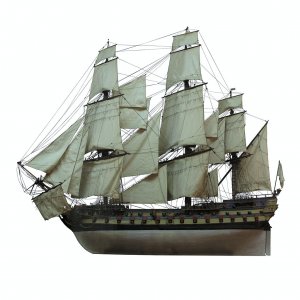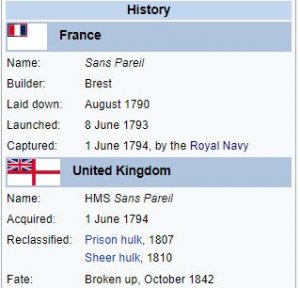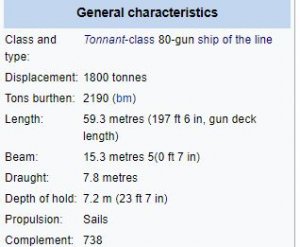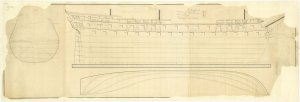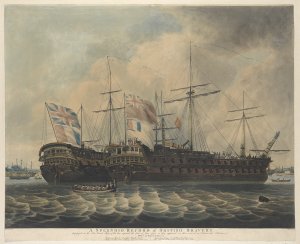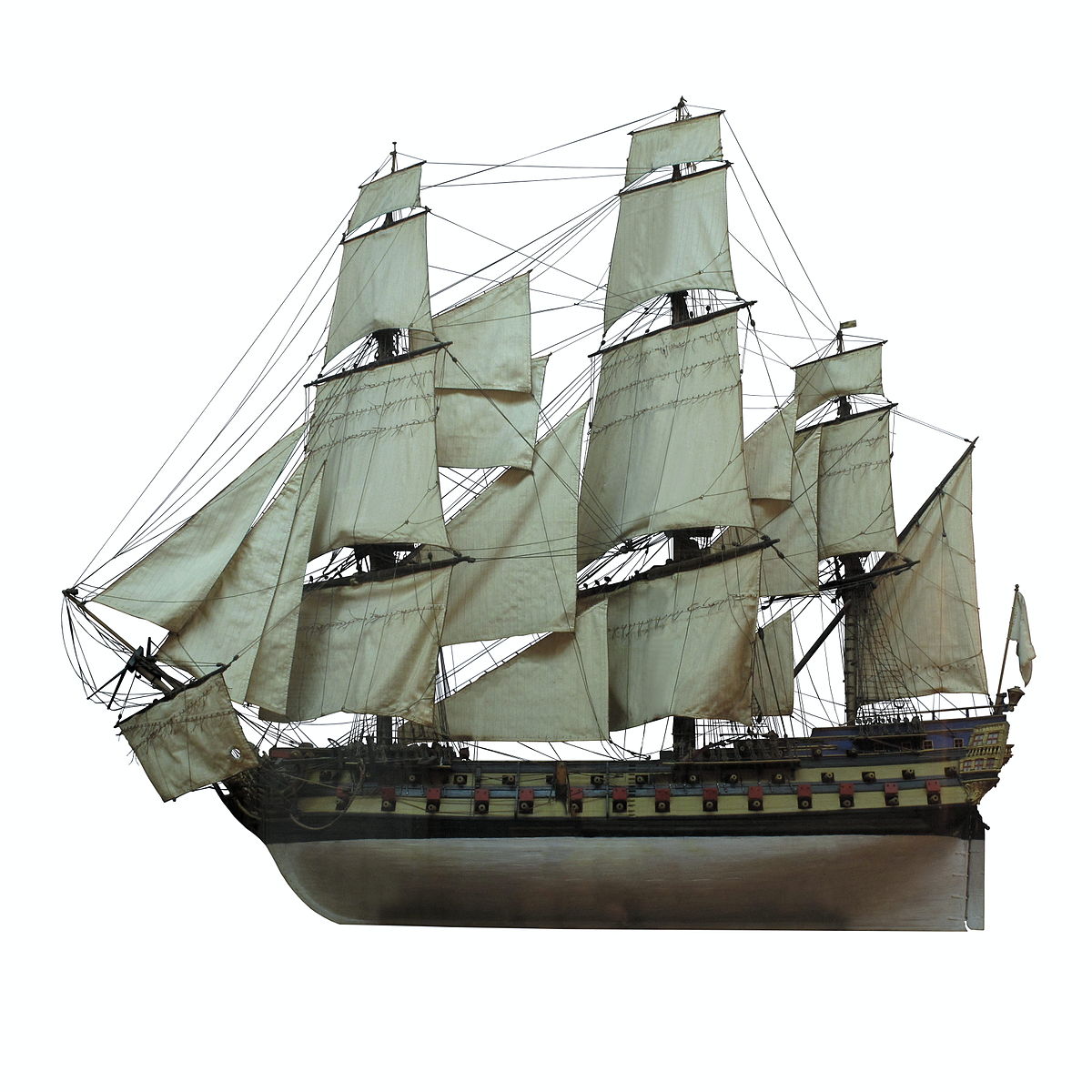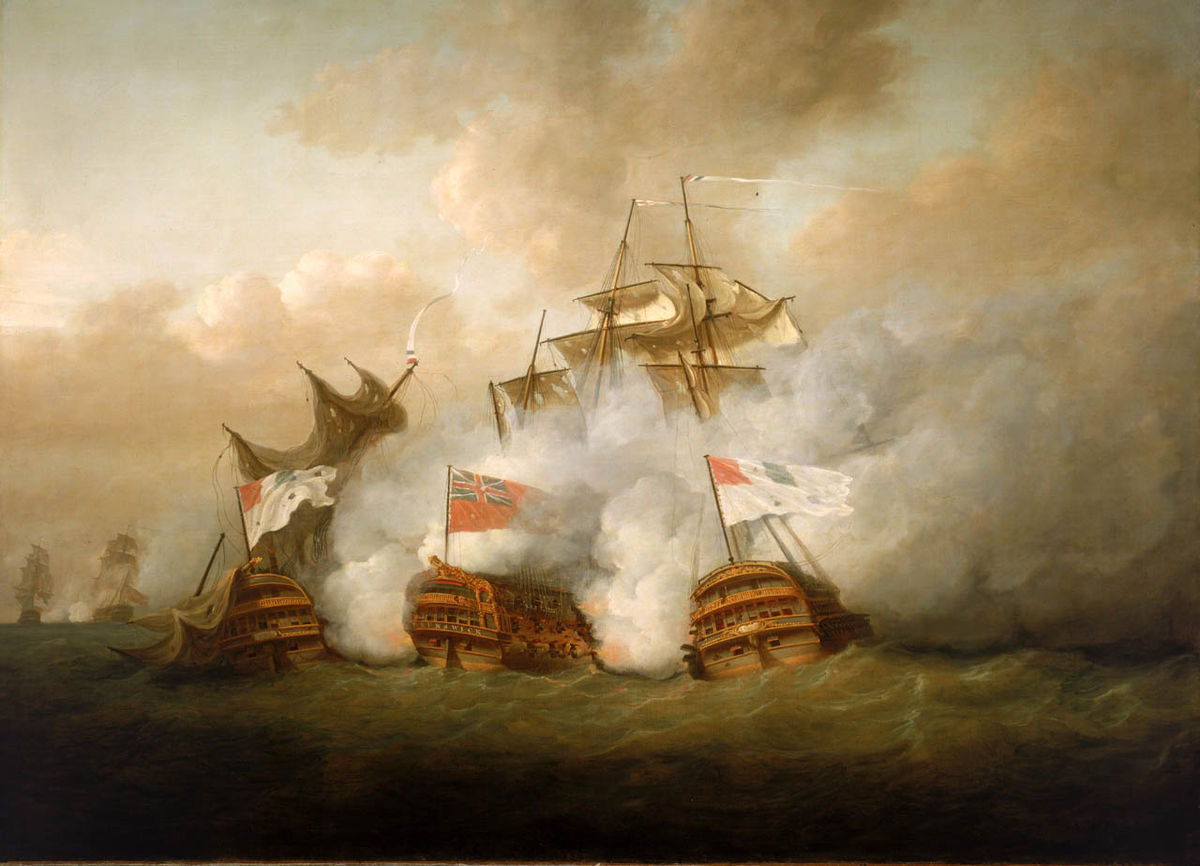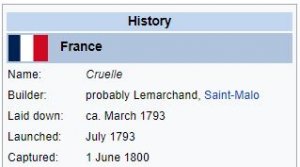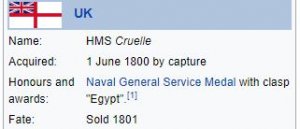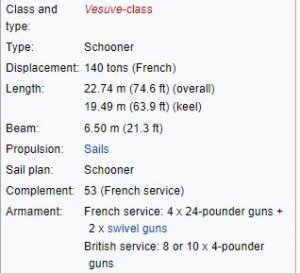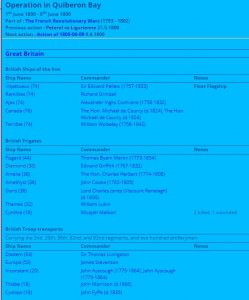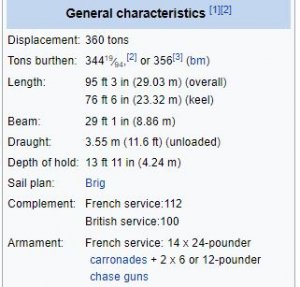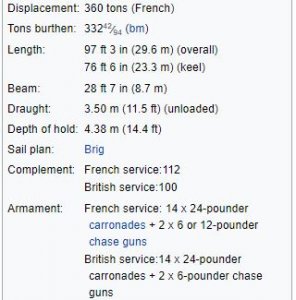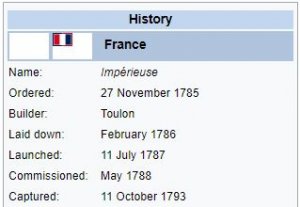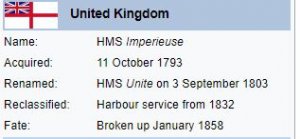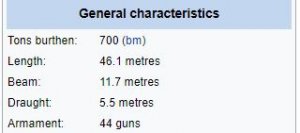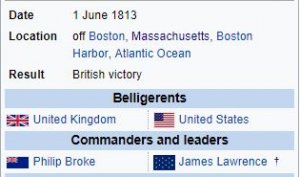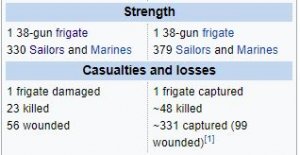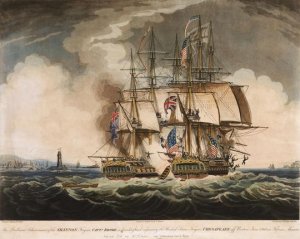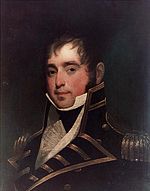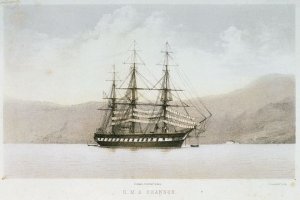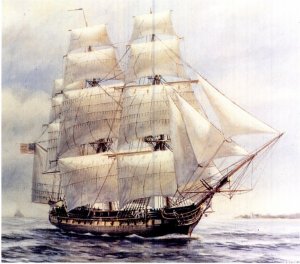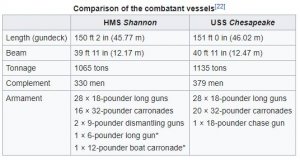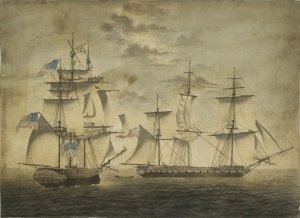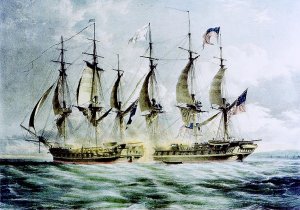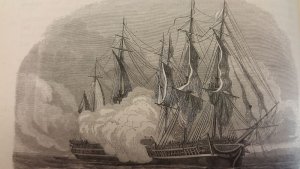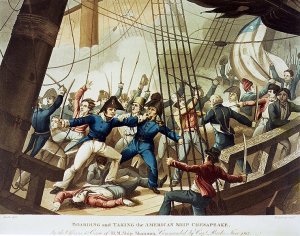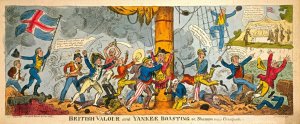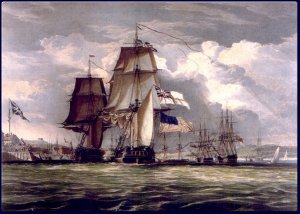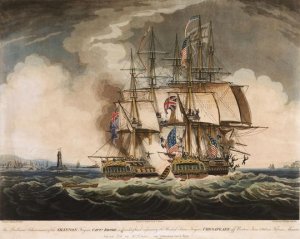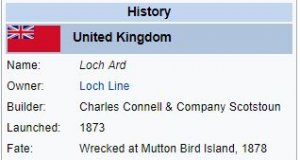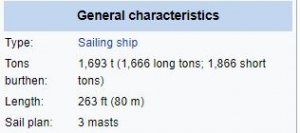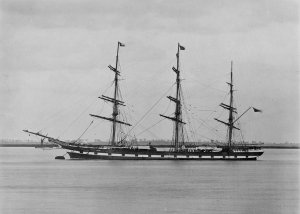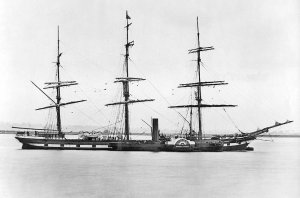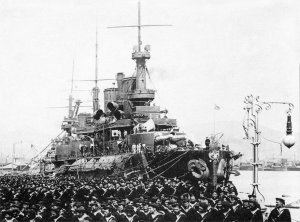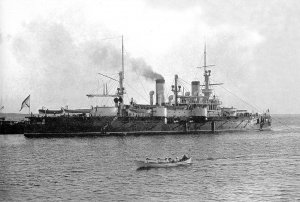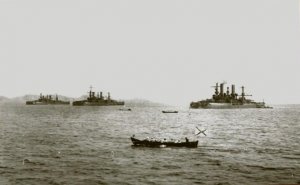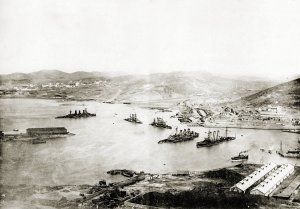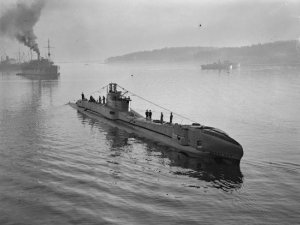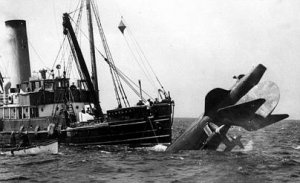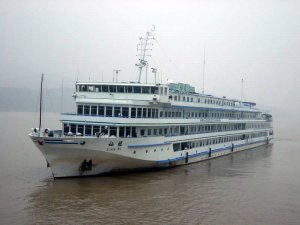Today in Naval History - Naval / Maritime Events in History
1 June 1666 - Four Days Battle
First day of The Four Days Battle, off the North Foreland between the English fleet of 56 ships, under George Monck, 1st Duke of Albemarle, and the Dutch fleet of 84 ships, under Lt.-Admiral Michiel de Ruyter.
The Four Days' Battle was a naval battle of the Second Anglo-Dutch War. Fought from 1 June to 4 June 1666 in the Julian or Old Style calendar then used in England off the Flemish and English coast, it remains one of the longest naval engagements in history.
The Dutch inflicted significant damage on the English fleet. The English had gambled that the crews of the many new Dutch ships of the line would not have been fully trained yet, but were deceived in their hopes: they lost ten ships in total, with around 1,500 men killed including two vice-admirals, Sir Christopher Myngs and Sir William Berkeley, while about 2000 English were taken prisoner. Dutch losses were four ships destroyed by fire and over 1,550 men killed, including Lieutent Admiral Cornelis Evertsen, Vice Admiral Abraham van der Hulst and Rear Admiral Frederik Stachouwer.
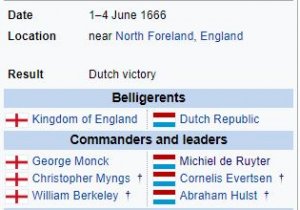
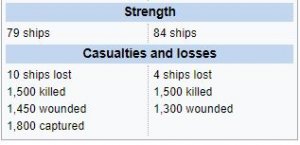
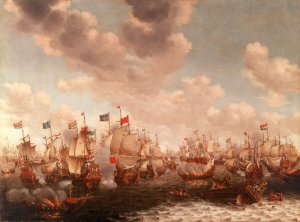
Background
In June 1665 the English had soundly defeated the Dutch in the Battle of Lowestoft, but failed to take advantage of it. The Dutch Spice Fleet, loaded with fabulous riches, managed to return home safely after the Battle of Vågen. The Dutch navy was enormously expanded through the largest building programme in its history. In August 1665 the English fleet was again challenged, though no large battles resulted. In 1666, the English became anxious to destroy the Dutch navy completely before it could grow too strong and were desperate to end the activity of Dutch raiders as a collapse of English trade threatened.
On learning that the French fleet intended to join the Dutch at Dunkirk, the English decided to prevent this by splitting their fleet. Their main force would try to destroy the Dutch fleet first, while a squadron under Prince Rupert was sent to block the Strait of Dover against the French—who however did not appear.
At the start of the battle the English fleet of 56 ships commanded by George Monck, 1st Duke of Albemarle who also commanded the Red Squadron, was outnumbered by the 84-strong Dutch fleet commanded by Lieutenant-Admiral Michiel de Ruyter. The battle ended with an English flight into a fog bank after both fleets had expended most of their ammunition.
Battle
First Day
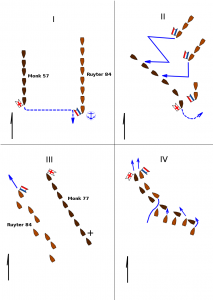
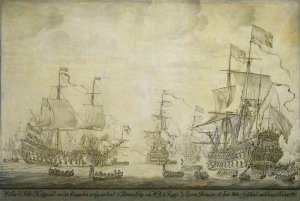
Battle council on the De Zeven Provinciën by Willem van de Velde the Elder, 1666
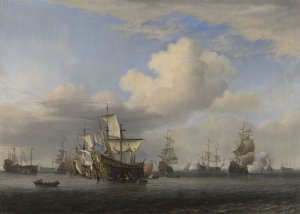
HMS Swiftsure, Seven Oaks and Loyal George captured and flying Dutch colours, by Willem van de Velde the Younger
On the first day Monck, sailing in the van with George Ayscue's white squadron behind him and Thomas Teddiman's blue squadron forming the rear, surprised the Dutch fleet at anchor near Dunkirk. Despite disadvantageous weather conditions Monck decided to attack the Dutch rear under Lieutenant-Admiral Cornelis Tromp hoping to cripple it before the Dutch centre and van could intervene. After sending a message to Rupert to join him if possible, Monck aggressively attacked Tromp who fled over the Flemish shoals. Monck then wore to the northwest, to meet the Dutch centre (under De Ruyter) and van (commanded by Lieutenant-Admiral Cornelis Evertsen the Elder). Tromp again turned, but his ship Liefde collided with Groot Hollandia. Vice-Admiral Sir William Berkeley saw this and closed in with HMS Swiftsure. Immediately Callantsoog and Reiger came to the rescue of their commander, destroying the rigging of the English ship with chain shot; the Reiger then managed to board the Swiftsure.
Berkeley challenged the Dutch sea soldiers, shouting: You dogs, you rogues, have you the heart, so press on board! but was fatally wounded in the throat by a musket ball, after which the Swiftsure was captured. In the powder room the constable was found with his throat cut; he had tried to blow up the ship but his own crew killed him first and drenched the powder, claiming afterwards the man had cut his own throat from pure frustration. The damaged HMS Seven Oaks (the former Sevenwolden) was captured by the Beschermer while HMS Loyal George tried to assist the Swiftsure but this only resulted in the capture of both ships. The embalmed body of Berkeley, after being displayed in The Hague, was later returned to England under a truce, accompanied by a letter of the States General praising the Admiral for his courage. HMS Rainbow, one of the two scouts who had first spotted the Dutch fleet, got isolated and fled to neutral Ostend, chased by twelve ships from Tromp's squadron while the other, the Kent, left the battlefield in search of Rupert's squadron.
Both fleets bombarded each other in a line of battle. The Hof van Zeeland and the Duivenvoorde were hit by fire shot and burnt. The Dutch didn't know of the existence of this type of ammunition, consisting of hollow brass balls filled with a flammable substance, so they were greatly surprised. Luckily for them the English had only a small supply because of the high cost of production.
Monck retreated for the night, but the ship of Rear-Admiral Harman, HMS Henry, drifted to the Dutch lines and was set aflame by two fireships. The parson asked Harman what could save them; when the latter sarcastically replied that the good parson could always jump overboard, to his horror the panicked clergyman at once followed his advice together with a third of the crew. All drowned. Harman made an end to the panic by threatening with a drawn sword to run through anyone showing the slightest inclination to abandon ship. Evertsen now closed in and inquired whether Harman would perhaps like to surrender; it came as no surprise to him the renowned fighter respectfully declined, yelling "I'm not up to it yet!". Despite repeated Dutch attacks and the loss of two masts, one in its fall crushing Harman's leg, the fire was put out and the Henry escaped, with its last shot shooting Evertsen in two.
A detailed listing of all ships "Order of Battle" involved in this battle you can find at Threedecks
Michiel de Ruyter (Dutch pronunciation: [miˈxil də ˈrœy̯tər]) is a 2015 Dutch film about the 17th-century admiral Michiel de Ruyter directed by Roel Reiné. The film had its world premiere in the Nederlands Scheepvaartmuseumin Amsterdam on 26 January 2015 and has been released in cinemas in the Netherlands on 29 January 2015. On the English promotional website, the film has the title Admiral.
https://en.wikipedia.org/wiki/Four_Days'_Battle
1 June 1666 - Four Days Battle
First day of The Four Days Battle, off the North Foreland between the English fleet of 56 ships, under George Monck, 1st Duke of Albemarle, and the Dutch fleet of 84 ships, under Lt.-Admiral Michiel de Ruyter.
The Four Days' Battle was a naval battle of the Second Anglo-Dutch War. Fought from 1 June to 4 June 1666 in the Julian or Old Style calendar then used in England off the Flemish and English coast, it remains one of the longest naval engagements in history.
The Dutch inflicted significant damage on the English fleet. The English had gambled that the crews of the many new Dutch ships of the line would not have been fully trained yet, but were deceived in their hopes: they lost ten ships in total, with around 1,500 men killed including two vice-admirals, Sir Christopher Myngs and Sir William Berkeley, while about 2000 English were taken prisoner. Dutch losses were four ships destroyed by fire and over 1,550 men killed, including Lieutent Admiral Cornelis Evertsen, Vice Admiral Abraham van der Hulst and Rear Admiral Frederik Stachouwer.



Background
In June 1665 the English had soundly defeated the Dutch in the Battle of Lowestoft, but failed to take advantage of it. The Dutch Spice Fleet, loaded with fabulous riches, managed to return home safely after the Battle of Vågen. The Dutch navy was enormously expanded through the largest building programme in its history. In August 1665 the English fleet was again challenged, though no large battles resulted. In 1666, the English became anxious to destroy the Dutch navy completely before it could grow too strong and were desperate to end the activity of Dutch raiders as a collapse of English trade threatened.
On learning that the French fleet intended to join the Dutch at Dunkirk, the English decided to prevent this by splitting their fleet. Their main force would try to destroy the Dutch fleet first, while a squadron under Prince Rupert was sent to block the Strait of Dover against the French—who however did not appear.
At the start of the battle the English fleet of 56 ships commanded by George Monck, 1st Duke of Albemarle who also commanded the Red Squadron, was outnumbered by the 84-strong Dutch fleet commanded by Lieutenant-Admiral Michiel de Ruyter. The battle ended with an English flight into a fog bank after both fleets had expended most of their ammunition.
Battle
First Day


Battle council on the De Zeven Provinciën by Willem van de Velde the Elder, 1666

HMS Swiftsure, Seven Oaks and Loyal George captured and flying Dutch colours, by Willem van de Velde the Younger
On the first day Monck, sailing in the van with George Ayscue's white squadron behind him and Thomas Teddiman's blue squadron forming the rear, surprised the Dutch fleet at anchor near Dunkirk. Despite disadvantageous weather conditions Monck decided to attack the Dutch rear under Lieutenant-Admiral Cornelis Tromp hoping to cripple it before the Dutch centre and van could intervene. After sending a message to Rupert to join him if possible, Monck aggressively attacked Tromp who fled over the Flemish shoals. Monck then wore to the northwest, to meet the Dutch centre (under De Ruyter) and van (commanded by Lieutenant-Admiral Cornelis Evertsen the Elder). Tromp again turned, but his ship Liefde collided with Groot Hollandia. Vice-Admiral Sir William Berkeley saw this and closed in with HMS Swiftsure. Immediately Callantsoog and Reiger came to the rescue of their commander, destroying the rigging of the English ship with chain shot; the Reiger then managed to board the Swiftsure.
Berkeley challenged the Dutch sea soldiers, shouting: You dogs, you rogues, have you the heart, so press on board! but was fatally wounded in the throat by a musket ball, after which the Swiftsure was captured. In the powder room the constable was found with his throat cut; he had tried to blow up the ship but his own crew killed him first and drenched the powder, claiming afterwards the man had cut his own throat from pure frustration. The damaged HMS Seven Oaks (the former Sevenwolden) was captured by the Beschermer while HMS Loyal George tried to assist the Swiftsure but this only resulted in the capture of both ships. The embalmed body of Berkeley, after being displayed in The Hague, was later returned to England under a truce, accompanied by a letter of the States General praising the Admiral for his courage. HMS Rainbow, one of the two scouts who had first spotted the Dutch fleet, got isolated and fled to neutral Ostend, chased by twelve ships from Tromp's squadron while the other, the Kent, left the battlefield in search of Rupert's squadron.
Both fleets bombarded each other in a line of battle. The Hof van Zeeland and the Duivenvoorde were hit by fire shot and burnt. The Dutch didn't know of the existence of this type of ammunition, consisting of hollow brass balls filled with a flammable substance, so they were greatly surprised. Luckily for them the English had only a small supply because of the high cost of production.
Monck retreated for the night, but the ship of Rear-Admiral Harman, HMS Henry, drifted to the Dutch lines and was set aflame by two fireships. The parson asked Harman what could save them; when the latter sarcastically replied that the good parson could always jump overboard, to his horror the panicked clergyman at once followed his advice together with a third of the crew. All drowned. Harman made an end to the panic by threatening with a drawn sword to run through anyone showing the slightest inclination to abandon ship. Evertsen now closed in and inquired whether Harman would perhaps like to surrender; it came as no surprise to him the renowned fighter respectfully declined, yelling "I'm not up to it yet!". Despite repeated Dutch attacks and the loss of two masts, one in its fall crushing Harman's leg, the fire was put out and the Henry escaped, with its last shot shooting Evertsen in two.
A detailed listing of all ships "Order of Battle" involved in this battle you can find at Threedecks
Four Days Battle, 1st June 1666 - 4th June 1666
Description and participants : Four Days Battle, 1st June 1666 - 4th June 1666
threedecks.org
Michiel de Ruyter (Dutch pronunciation: [miˈxil də ˈrœy̯tər]) is a 2015 Dutch film about the 17th-century admiral Michiel de Ruyter directed by Roel Reiné. The film had its world premiere in the Nederlands Scheepvaartmuseumin Amsterdam on 26 January 2015 and has been released in cinemas in the Netherlands on 29 January 2015. On the English promotional website, the film has the title Admiral.
https://en.wikipedia.org/wiki/Four_Days'_Battle
Book review - Book Review: "GREAT SHIPS: The Battle Fleet of King Charles II" by Frank L. Fox
Great Ships: The Battle Fleet of King Charles II By Frank L. Fox Hardcover: 208 pages Publisher: Conway Maritime Press; 1st ed. edition 1980 Language: English Package Dimensions: 11.8 x 9.7 x 0.5 inches or 30 * 24,6 * 1,3 cm Shipping Weight: 2.8 pounds Synopsis from Book: The rapid...
shipsofscale.com
Last edited by a moderator:


